LAST UPDATED: FEB-27-2017
This article didn’t need much tinkering, although we made one major change. We ditched the Dean V Dave Mustaine which had started to show its age, and replaced it with the stylish, affordable and very beginner-friendly Squier Vintage Modified ’51.
Looking to buy your first guitar? Congratulations – this is a date to remember! Learning the guitar is a life-changing experience, and opens you to a new range of possibilities. But before you can learn, you need a guitar on which to practice and perform.
Table Of Contents [show]
Whether you’re 16 or 60, one of these beautiful guitars will appeal to your taste, style, and budget, and will serve you well for years to come. Stay with us after the chart for a full guide on electric guitars and how to find the best one for you. So here is the list with the best electric guitars for beginners:
Top 10 Best Beginner Electric Guitars:
| Image | Electric Guitar / Rating | Summary | Check Price |
|---|---|---|---|
 | Epiphone Les Paul Standard
Total of 4.64/5
 |
Style, sound and playability – the complete package.
| |
 | Fender Modern Player Telecaster
Total of 4.66/5
 |
A real fender for a killer price.
| |
 | Yamaha Pacifica Series PAC112V
Total of 4.58/5
 |
The classic Yamaha Pacifica with outstanding value.
| |
 | Ibanez RG450DX
Total of 4.50/5
 |
After almost 30 years, still a great pick.
| |
 | Squier Vintage Modified ’51
Total of 4.78/5
 |
One of Squier’s best guitars, showing off awesome playability, versatility and value.
| |
 | Epiphone LP-100 Les Paul
Total of 4.46/5
 |
The LP-100 is a never forget axe for every newbie.
| |
 | Squier Classic Vibe Stratocaster 50s
Total of 4.46/5
 |
Old school axe by Fender for the players with extra style.
| |
 | Epiphone G-310 SG
Total of 4.42/5
 |
The G310 is a great solution for starters on a budget.
| |
 | Jackson JS32T Kelly
Total of 4.48/5
 |
Probably the best looking among the JS32 options.
| |
 | ESP LTD M100FM
Total of 4.28/5
 |
Shred much? If you are into it, the M100FM is a perfect pick!
|
Epiphone Les Paul Standard
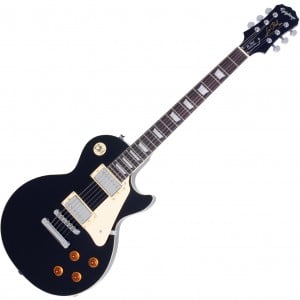
| Body And Neck: |  |
| Hardware: |  |
| Electronics: |  |
| Sound: |  |
| Value: |  |
We start this list with a true classic in the world of electric guitar: the Les Paul Standard. For beginners, this is as close to a Gibson Les Paul as you want to get – and the affordable price really allows you to. With authentic Les Paul single-cutaway style – in an array of traditional and modern colors – there’s a solid mahogany body with a maple top, a slim D-shaped set mahogany neck, with rosewood fretboard, and 22 medium jumbo frets. Lovely to hold and fun to play. The sound comes from two Alnico Classic humbuckers at the neck and bridge, which are excellent at handling both clean and overdriven tones, with the warmth and tone you’d expect from Epiphone. In all, an outstanding electric guitar for beginners, as we state in our full review.
Fender Modern Player Telecaster
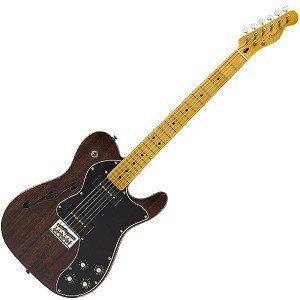
| Body And Neck: |  |
| Hardware: |  |
| Electronics: |  |
| Sound: |  |
| Value: |  |
This Modern Player Tele from Fender is an electric guitar that will thoroughly please both beginners and experienced guitarists alike. With the iconic Tele shaped single-cutaway solid pine body, there’s a glossy modern C-shaped maple neck, maple fretboard, and 22 jumbo frets – very comfortable and playable. The sound is where this guitar shines – it’s just so versatile! This is down to the three pickups, all with very different characteristics. There’s a humbucker at the bridge, a Strat single-coil in the middle, and a Tele single-coil at the neck. Throw in a five-way pickup selector switch and humbucker coil-tapping, and there’s no end to the sounds you can produce. Check out the full reviewof the Modern Player Telecaster for more on this excellent starter guitar.
Yamaha Pacifica Series PAC112V
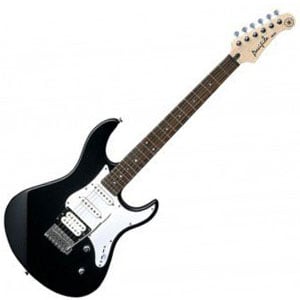
| Body And Neck: |  |
| Hardware: |  |
| Electronics: |  |
| Sound: |  |
| Value: |  |
Yamaha have a reputation for producing affordable, versatile and good-looking electric guitars for beginners, and the Pacifica 112V (as we talk about in detail here) certainly aims to please. The Pacifica series is targeted at beginners, although experienced players would enjoy this just as much. With a whole rainbow of colors to choose from, an edgy Strat look, and curves in all the right places, the 112V features a solid alder body, bolt-on maple neck, and rosewood fretboard with 22 frets. It’s voiced by three Yamaha-designed Alnico V pickups – a humbucker and two single-coils, for lots of versatility and tone. The guitar also features a five-way pickup selector switch, coil-tapping on the master tone control, and a vintage-style tremolo with whammy bar. A superb choice for any beginner!
Ibanez RG450DX
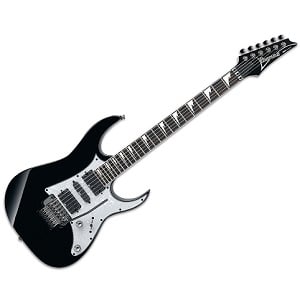
| Body And Neck: |  |
| Hardware: |  |
| Electronics: |  |
| Sound: |  |
| Value: |  |
On a list highlighting affordable, quality, and beginner-friendly guitars it would be a sin to exclude an Ibanez. And the RG450DX more than earns its place – it’s sensational in both sound, style and feel. With the classic RG double-cutaway body shape, it’s made from solid basswood with a sleek and speedy Wizard III maple neck, with a rosewood fretboard, and a full 24 jumbo frets for excellent soloing capabilities. The RG450DX – reviewed in full here – has a trio of Quantum pickups, with two humbuckers and a single-coil in the middle, giving this axe mega tone, and plenty of rock aggression. The Edge-Zero II and locking nut finishes it off nicely. A great value classic with a premium feel.
Squier Vintage Modified ’51
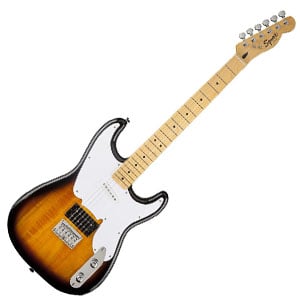
| Body And Neck: |  |
| Hardware: |  |
| Electronics: |  |
| Sound: |  |
| Value: |  |
Here we have a unique but familiar guitar from Squier, that marries the Stratocaster body, Telecaster headstock, and pickguard from the ‘51 P-Bass, resulting in a good-looking and very playable vintage model that’s ultra affordable. It features a double-cutaway basswood body and a fast, satin-smooth C-shaped maple neck, with matching maple fretboard and 21 medium-jumbo frets. It shines with its electronics too, and comes fitted with a standard Strat single-coil pickup at the neck position, and an open-coil hot humbucker at the bridge (which can be coil-split, turning it into a second single-coil). As we state in our full review of the ‘51, it’s extremely versatile – there’s no end to the tones you can find with this beauty. Quite possibly the best value guitar on this list!
Epiphone LP-100 Les Paul
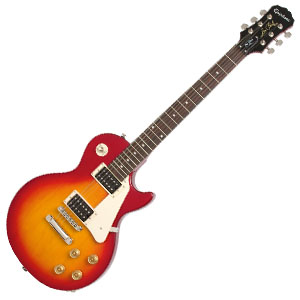
| Body And Neck: |  |
| Hardware: |  |
| Electronics: |  |
| Sound: |  |
| Value: |  |
With similar specs and style to the 1952 original – but without the $10,000 price tag – this LP-100 from Epiphone demands attention. As highlighted in our full review, with a classic Les Paul shape, the body is crafted from solid mahogany with a maple top, and features a bolt-on mahogany neck, with rosewood fingerboard, and 22 medium-jumbo frets. The guitar has solid hardware, including a LockTone tune-o-matic bridge and StopBar tailpiece, and 14:1 die-cast machine heads. Good looks and hardware aside, this electric guitar sounds fantastic. This is thanks to the two humbuckers – a 700T at the bridge and 650R at the neck – which offer full, warm tones that adapt to the majority of styles. Perfect for a beginner, although by no means an entry-level guitar.
Squier Classic Vibe Stratocaster 50s
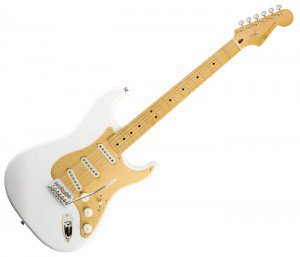
| Body And Neck: |  |
| Hardware: |  |
| Electronics: |  |
| Sound: |  |
| Value: |  |
If you’ve read our full reviewof the 50s Stratocaster, you’ll know that this Classic Vibe Stratocaster is an excellent prospect for any beginner who loves the good old days of rock n’ roll! Made by Squier, this 50s-inspired electric has huge vintage appeal, with a modern feel thanks to a trio of Alnico III single-coil pickups and a smooth, modern C-shaped maple neck (with 21 medium jumbo frets). The body is made from solid alder with all the classic Strat style you’d expect from a Fender subsidiary, with a real vintage look (especially in the Sherwood Green with matching headstock). As for the sound, the three single-coils give it authentic Strat tone – well balanced with great clarity and sustain. Affordable, but far from an entry-level model, this is one of the best Squiers around.
Epiphone G-310 SG
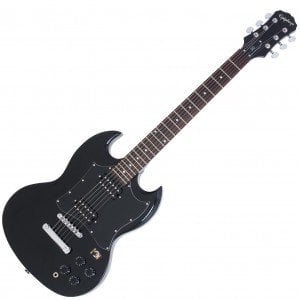
| Body And Neck: |  |
| Hardware: |  |
| Electronics: |  |
| Sound: |  |
| Value: |  |
Here we have another awesome guitar from Epiphone, based on the 1967 version of the iconic Gibson SG. This ‘67 SG has the authentic asymmetrical double-cutaway shape you’d expect, with a mahogany body and a SlimTaper D-shaped bolt-on mahogany neck, with rosewood fretboard and 22 frets. It looks great, and feels comfortable and well-balanced to hold. The G-310, as we explain in our full review, is fitted with two Epiphone open-coil alnico humbuckers at the bridge and neck, which deliver plenty of warmth and tone to deal with both classic and modern styles. It also features LockTone tuners and a tune-o-matic bridge, with stopbar tailpiece, for good tuning stability. In all, it’s a great modern version of a true classic.
Jackson JS32T Kelly
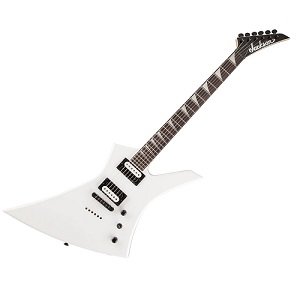
| Body And Neck: |  |
| Electronics: |  |
| Hardware: |  |
| Sound: |  |
| Value: |  |
Want a guitar with attitude? Something to turn a few heads? You won’t go far wrong with the super extroverted JS32T Kelly from Jackson, which comes in a range of colors. It features a classic Z-shaped body made from solid basswood, which gives excellent access to the 24 jumbo frets, which sits on a bolt-on, graphite-reinforced maple neck with rosewood fretboard. Two Jackson-designed high-output humbuckers at the bridge and neck offer good meaty tones, targeted towards heavier overdriven rock and metal styles. The through-body fixed bridge gives great sustain and tuning stability. Whether you’re just starting out or a long-time shredder, all rock guitarists would find the JS32T Kelly a worthwhile purchase. Make sure to check out our full review of the JS32T Kelly.
ESP LTD M100FM
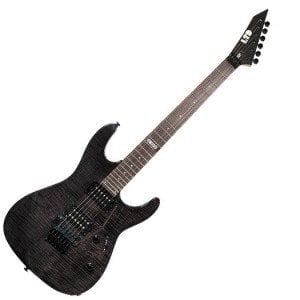
| Body And Neck: |  |
| Hardware: |  |
| Electronics: |  |
| Sound: |  |
| Value: |  |
While this M100FM from ESP has all the qualities a beginner electric guitar should have, it is so much more than an entry-level guitar. It sports a relatively simple look, with a familiar sleek double-cutaway shaped body made from basswood, but with a flamed maple top that’s visible through the translucent paintwork. The shape allows for ample access to all 24 extra jumbo frets of the rosewood fretboard, which sits atop a sturdy bolt-on maple neck. The hardware, in black nickel, looks and feels quality, especially the double-locking Floyd Rose Special bridge which ensures good tuning stability. The guitar is voiced by two ESP LH-150 humbuckers, which are excellent for hard rock and metal. Make sure to check out the full review of this awesome axe.
In the past, buying an electric guitar wasn’t always as satisfying as it should be. In the days before the internet, you had to rely on the wisdom of your local guitar store, a couple of magazines, and your gut instinct. You may have ended up with something half decent – if you were lucky – but rarely would you have found your ‘dream guitar’. In fact, without the internet, you probably weren’t aware it even existed!
These days things are different. Thousands of guitars are available to you at the click of a button. You can find everything you need online, from any kind of guitar you could imagine, to amps, strings and even some top-rated guitar lessons for beginners.
As long as you are willing to do some research, you’re likely to walk away with something that really appeals to you and will continue to please you as you grow into a good guitar player.
The Guitar Buying Guide for Beginners
When buying your first guitar, it’s sensible to stop and think about what you are buying it for. Is it just something to learn on? Will you be upgrading in a year or two when you start thinking about forming a band, gigging, and recording? If so, you may be better off trying one of these affordable electric guitars, which all offer a solid platform on which to learn.
Whatever budget you’re on, you will always be able to find a suitable guitar. Even in the $100 price range you can find some models that play nicely. However, in that super-budget market there is a lot of garbage, so be careful. There’s a difference between ‘affordable’ and ‘cheap’, so do your research before buying something that may offer no value.
Even if you are on a budget, it’s always worth looking in the higher price brackets and considering something a little more expensive, which will offer better sound quality (which is always encouraging), better build quality (usually more comfortable to hold and play), looks cooler (which will keep you motivated), and will last you longer – allowing you to grow with the guitar. It’s best to buy at the top end of what you can afford. For additional inspiration, make sure to check out this electric guitar list.
Always factor in the size of your instrument. If you are a young player – or are buying a guitar for a child – consider that small hands playing on a full-size guitar may be more difficult than if you had an electric guitar made for kids.
The Anatomy Of An Electric Guitar
If you are serious about buying a guitar and learning how to play on it, you should be familiar with everything one can offer, from woods to pickups. Here’s a brief picture of some of the most important components that make up a guitar, and what you should look out for when browsing:
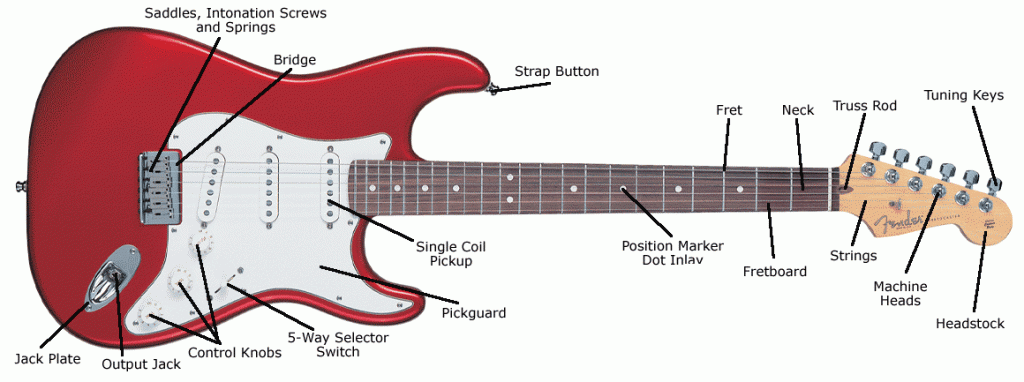
Body Style
Before we go into the parts of an electric guitar, it’s worth noting that there are three different body types: solid body, hollow body, and semi-hollow body. The main difference between them is the way the bodies are constructed, and the amount of resonance they produce. If you’re into punk, rock, metal, or any style of fast or heavy music, then it should be solid body all the way. It allows for louder sounds and more sustain, while avoiding the feedback issues that affect some hollow bodied instruments at higher volumes. The hollow and semi-hollow bodied guitars on the market will appeal to players who prefer softer styles, such as jazz, country and blues, as well as soft rock and pop, as they offer a full, rich and more resonant sound with lots of bass. Beginners will be best off sticking to a solid bodied guitar, as they are easier to handle in most scenarios. For the rest of this anatomical breakdown we’ll focus on solid body guitars.
Body Shape
Solid body guitars offer a fantastic platform for builders, allowing them to craft the wood into literally any shape. Naturally you’ll probably want to opt for a guitar with a single-cutaway Les Paul or Telecaster style shape, or a double-cutaway shape like a Stratocaster, Yamaha Pacifica, or Ibanez’s RG. However, the more extroverted beginner can check out some cool styles that always catch the attention, such as V or Z shaped guitars, or anything from Dean Guitars – especially if you want an eye-catching paint job!
Body Wood
Although it’s a minor issue when choosing your first guitar, the tone and sustain that the guitar can produce relies on the quality of the material it’s made from. The most used tonewoods in the budget range are basswood, poplar, alder, and paulownia, while more expensive guitars can be made from pine, mahogany, and swamp ash. This is just a rough rule though – these days you will find mahogany in budget guitars and basswood in premium models. They all have different tonal qualities – for example, mahogany typically offers a warmer sound, swamp ash is brighter, while basswood and alder are well-balanced.
Necks
As for necks, the majority of guitars will have either a maple or mahogany neck, with a rosewood, maple or ebony fretboard. Again, there’s no right or wrong, and a neck wood is never going to sway your decision. But you should choose something that feels smooth and comfortable to play. There are a variety of shapes and profiles, and what you go for will depend on personal preference and playing style. For example, a modern C-shaped neck is always a safe choice as the majority of guitarists will feel comfortable using it, while a thin U-shape is great for faster players (think punk rock and metal).
Pickups
There are two main types of pickup you’ll find on a guitar suitable for beginners: a single-coil pickup and a humbucker pickup. Without bogging you down in the details of how they work, the single-coil is the classic original pickup, which typically offers a bright and sparkly sound. As they cut through the mix, single-coils are excellent pickups for lead players. Then comes the faithful humbucker, which – as the name suggests – ‘bucks’ the hum, meaning less background noise. Humbuckers produce full, meaty sounds found across the world of rock and metal, and are great for lead and rhythm guitar. However you can still play fast punk rock powerchords with a single-coil, just like you can play an upbeat country number with a humbucker! You’ll usually find two or three pickups on a guitar, although some models will offer just one. Guitars with two or more pickups will come fitted with a pickup selector switch to quickly change between them.
Frets
The frets are those thin metal bars running down the neck, which act as note separators, allowing you to play individual notes and chords. Most guitars will feature 22 frets, although those more rock and metal-inclined will sometimes offer 24, allowing you to reach higher notes. As a beginner it shouldn’t really bother you whether you have 21, 22, or 24 frets. It’s only as you grow into the instrument you’ll find what works best for you.
Bridge
There are several kinds of bridge (located at the bottom of the guitar, where the strings are attached), but to keep things simple you’ll usually find either a fixed bridge or a tremolo bridge. Both have their pros and cons. A tremolo bridge will allow you to experiment with everything from vibrato effects right up to full-on divebombs, and can sound amazing when playing high lead solos. However, tremolo bridges can affect tuning, unless the bridge and nut locks. A fixed bridge is excellent for sustain and tuning stability, although there’s no vibrato. Again, it’s all down to personal preference.
Now you’re a little more informed on the parts that make up a guitar, which may help you when shopping around. For a summary that covers everything we’ve talked about, check out this useful video:
So You Have An Electric Guitar Suitable for Beginners! What Now?
First, let’s hope that with the guitar you also bought some essentials, such as an amplifier and a cable, as well as plectrums, a strap, and a bag.
Wherever you purchase your first guitar from, make sure to take it to a local professional or friend with some experience and ask them to set it up for you. They may charge you a few dollars, but it’ll be worth it to have fresh strings, a good action, and correct tuning. If possible, ask them if you can watch how they set it up, so next time you can try it yourself.
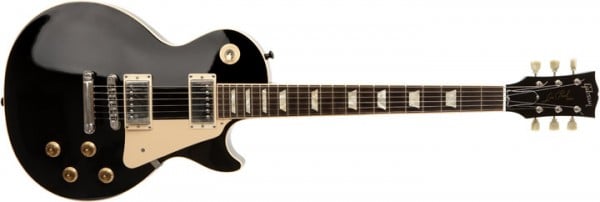
Now, you have your first electric guitar and it’s set up nicely. The next thing you ask is “what is the best way to learn guitar?” And the answer is simple – get some lessons! Whether it’s from your local pro, guitar teacher, or from a range of excellent online courses, lessons will teach you the basics – allowing you to start playing songs within a couple of hours.
Are Online Guitar Lessons Any Good?
Yes, most of them are very useful! These days there are hundreds of online tutors offering great guitar lessons. And there’s no need to throw your money at the first offer you see, as a lot of quality instructional and tutorial videos are completely free on platforms such as YouTube. Generally, paid courses tend to be better because they are tested and are well-structured, and – in theory – you should be able to progress faster. But it all depends on your budget and on your will to learn on your own.
Finally, have you ever heard a definitive answer to the question “how long does it take to learn guitar?” Us neither! Learning your first chords can take a few hours, but the instrument can take a lifetime to master. But that’s the joy of playing guitar – you never stop learning. It’s down to you to practise and progress, because practise makes perfect!
Good luck with your guitar shopping and first lessons, and keep returning to GuitarFella for all the latest news, reviews and advice!
Awesome post..
ReplyDeleteAwesome Post.
ReplyDeleteThis is Najnin Akter for "FloeMedia" Team.
I want to say just this is very nice post. It is also very helpful. I have been searching this types of tutorial because I have guitar. Some day ago I read an article about guitar. but this post is better than post. I follow you on your post and noticed that you shared one of my favorite guitar. That is such a great post. I was hearing from my readers that they wanted something more in-death about the topic, So I wanted ahead created this post (http://www.floemedia.com)
If you have time I'd love for you to check it out.
(Years of practice will bring you the desired results. If you really wish to play like described, then practice is done on daily basis. You must play everyday at least for 1 hour. Guitar playing requires patience, time and will...)
Thanks!
Najnin
FloeMedia
doug@floemedia.com
FoleMedia
Amazing article on guitars.
ReplyDeleteThis article are supper help full if you want to now more about firefly les paul guitar then please click here:
ReplyDelete